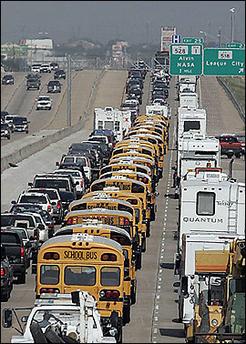Difference between revisions of "Evacuation management"
Jump to navigation
Jump to search
m (Text replace - "website=(.*)" to "") |
m (moved Evacuation Management to Evacuation management) |
||
| (One intermediate revision by the same user not shown) | |||
| Line 23: | Line 23: | ||
{{references}} |
{{references}} |
||
http://securipedia.eu/cool/index.php?wiki=securipedia.eu&concept=Evacuation Management |
|||
height=1023 |
|||
width=100% |
|||
border=0 |
|||
scroll=auto |
|||
align=middle |
|||
</websiteFrame> |
|||
<headertabs/> |
|||
Latest revision as of 10:44, 20 March 2013
Unexpected emergencies causing people to evacuate an area can result from transportation accidents, hazardous materials releases, earthquakes, flash flooding and other natural and man-made causes.
Objectives of evacuation management
When a large-scale, damaging event has occurred or the imminent threat of one has become known, transportation agencies, working with public safety and emergency management officials, focus on two traditional, principal objectives [1]:
- Minimize the time it takes to get an adequate force of emergency responders to the scene where they can help victims, provide assessments, and control access.
- Maximize the proportion of the population moved away from the hazardous area without being subjected to other risks (e.g., traffic accidents; prolonged exposure to the danger).
Recommendations for evacuation management strategy development
The level of accessibility determined by the access and egress points plays an important role in developing evacuation management strategies. Based on research by the U.S. Deparment of Transportation - Federal Highway Administration other important aspects when developing evacuation management strategies are[2]:
- Risk management is a key component of emergency evacuation planning and execution. Individuals need to realize that, in the event of an actual emergency evacuation, they will be required to make very critical decisions on the spot without the advice of supervisors or peers.
- It is difficult for transportation agencies to develop evacuation plans if there is only enough budget to conduct essential traffic operations work.
- Evacuation is not always the best choice; at times, it is not even feasible. Evacuation routing becomes very difficult if the transportation network is damaged during an event. Hence, sufficient planning for shelter-in-place is needed to complement evacuation planning.
- Implementing contraflow in the hopes of increasing roadway capacity is a tough decision to make because it will typically take at least a half day to set up contraflow operations.
- Agencies need to be aware that “letting their guard down” because an event has not occurred for some time can be costly.
- Regularly scheduled meetings among key transportation agencies throughout the region are very helpful for keeping up-to-date changes to various evacuation plans, among other things.
- Frequent emergency evacuation operations drills are very helpful for preparing for “the real thing.”
- Typically, the actual event is worse than anything that can be planned for.
Footnotes and references
- ↑ Managing Pedestrians During Evacuation of Metropolitan Areas. Publication No. FHWA-HOP-07-066. Final Report
- ↑ Evacuation Transportation Management - Task Four Interview and Survey Results. Publication No. FHWA-HOP-08-016. URL: http://www.its.dot.gov/its_publicsafety/task4/index.htm, retrieved on April 11, 2012.
